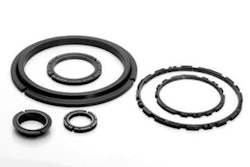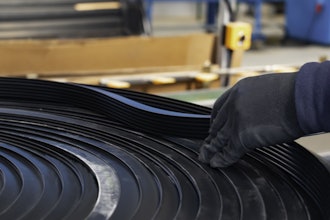
The food manufacturing industry is rife with change as companies increase automation, face new FDA regulations and deal with the ever-changing public sentiment surrounding food and wellness. With all of this on your plate, are you considering your business’ wellbeing? Is it receiving the attention it deserves?
Over the last several months you’ve had to overcome a number of economic challenges, like the fiscal cliff, the sequester and the Affordable Care Act debate. Each of these topics either has, or soon will, impact your company. The good news is, however, that people have to eat and your industry has forged ahead despite down economic times, showing increased innovation and creativity along the way. To make your business stronger moving into the end of 2013 and early 2014, there is a top business trend, opportunity and threat that you need to consider.
An informal poll of my manufacturing clients found that business trends like energy shifts, the shortage of skilled and technical talent and foreign investment from countries like China are in the forefront of manufacturers’ minds. The biggest trend, though, impacting manufacturing is re-shoring.
According to a recent article published in The Economist, the shift of manufacturing from high-to-low cost countries will slow over the next two years, while re-shoring is expected to double, meaning more jobs on American soil. The same can be said in Georgia where I practice accounting. HA&W recently conducted a survey of Georgia manufacturers that revealed there is more in-sourcing today by manufacturers in the state than out-sourcing for the first time in seven years.
Why, you ask? It’s all about costs… from energy to shipping and wages. Between 2000 and 2008, real wages in Asia rose by 7.1 percent to 7.8 percent a year, according to the International Labour Organisation. And senior management pay is emerging, too, with China, Turkey and Brazil now matching or exceeding American and European senior management pay.
There is an opportunity to recoup a portion of manufacturers’ costs through the Research & Development (R&D) Tax Credit, though some manufacturers are missing out. The R&D Tax Credit is offered at the Federal level and more than 70 percent of states in the U.S. offer R&D Tax Credits at the state level. According to the 2012 Georgia Manufacturing survey, 82 percent of Georgia manufacturers aren’t taking advantage of the R&D Tax Credit at the federal or state level. While this percentage is less in other states, there is money being left on the table by manufacturers across the country.
How does it work? R&D conducted in the U.S. is eligible for the Federal and/or State Research & Development Tax Credits. These credits are a real opportunity for manufacturers because they offset tax liabilities or can be monetized in certain scenarios. Those dollars saved can then be reinvested into the business to buy new equipment, hire more sales people or invest into more R&D. Manufacturers typically think of R&D in terms of product development, but plan initiatives and process improvements may also qualify.
So we’ve talked about a big business trend impacting manufacturers and a huge opportunity for you to put money back in your pocket, but what about the threat?
The top threat to food manufacturers moving into 2015 is the Affordable Care Act or ACA, specifically the Employer Mandate piece of the legislation. One of the most controversial portions of the ACA, the Employer Mandate was originally to be implemented in 2014, but was recently delayed by the Obama administration.
With the arrival of 2015 comes the requirement that all employers with more than 50 full-time or full-time equivalent employees offer affordable health care coverage. This change will bring with it tough decisions for manufacturers, like “should I decrease my workforce?”
What’s the threat? The threat is increased taxes, increased employee health care costs and the risk of penalties. By January 1, 2015 all manufacturers will have to decide whether or not they’ll “pay or play” under the Employer Mandate, meaning will they pay the penalties associated with not providing affordable health care coverage to employees, or offer the minimum required coverage?
Manufacturers and industry supporters around the country are concerned that mandated health care coverage increases the burden on manufacturers who already consider the “rising cost of health care to be unsustainable,” according to the National Association of Manufacturers. They fear that an increased health care cost per employee will negatively impact the manufacturing industry’s ability to create new jobs, a threat that could slow industry growth.
2013 is being called a “wait-and-see year” by many economists across industries, and with good reason. It’s still unclear what the rest of 2013 will hold economically, so it’s important to investigate every opportunity to cut costs. As healthcare costs inevitably increase, you want to investigate opportunities for cost savings through the opportunities afforded to you by re-shoring and R&D tax credits. What will the rest of 2013 hold? We’ll have to wait-and-see.
For more information, contact Adam Beckerman, partner-in-charge of the manufacturing & distribution group at HA&W, at [email protected] or 404-898-7542.























